Ladakh is bound to be one of the most epic journeys you can take in India, with the world’s two mightiest mountain ranges- the Himalayas and the Karakoram, the three highest motorable roads- Chang La, Khardung La, and Tanglang La, desert mountains, stunning night skies, rainbows, Tibetan monasteries, blossoms, lakes, rainbow hills, and the most stunning landscapes.
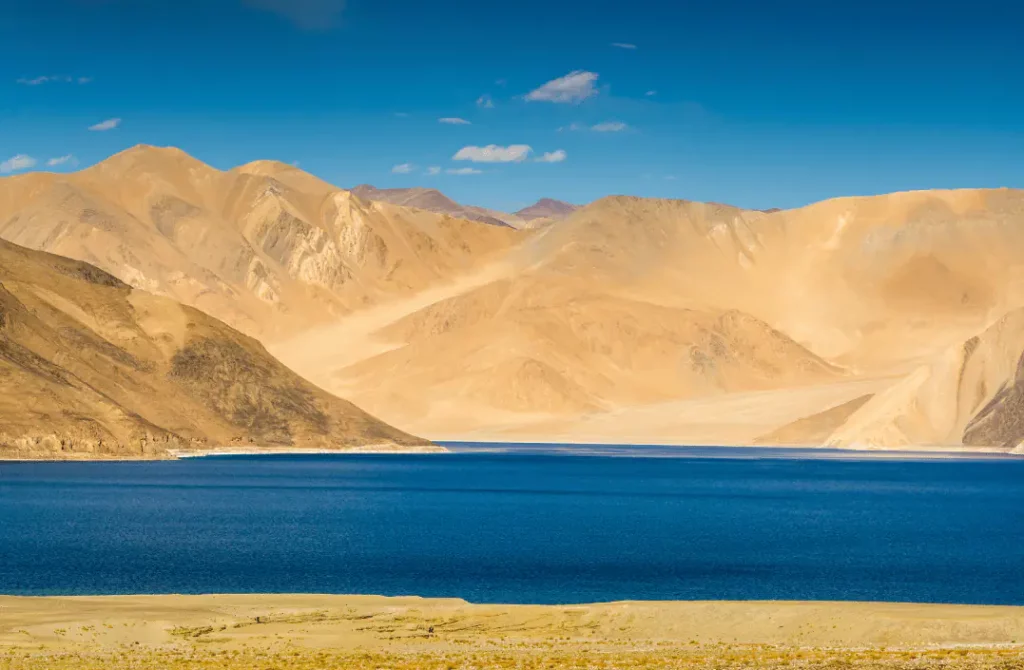
Pangong Lake, also known as Pangong Tso, is a high-altitude lake famed for its magnificent blue water that appears to change color three to four times a day from dawn to dark due to golden mountains and sunrays.
The Pangong lake is around 150 kilometers from Leh and is accessible after a 5-hour journey across the Changla pass, which is 17,590 feet (5,360 meters) high (Chang-la). Pangong Lake is located at an elevation of approximately 14,250 feet (4,350 m). Pangong Lake has salty water. During the winter, the lake freezes entirely making it walkable due to a heavy coating of frost covering the waters.

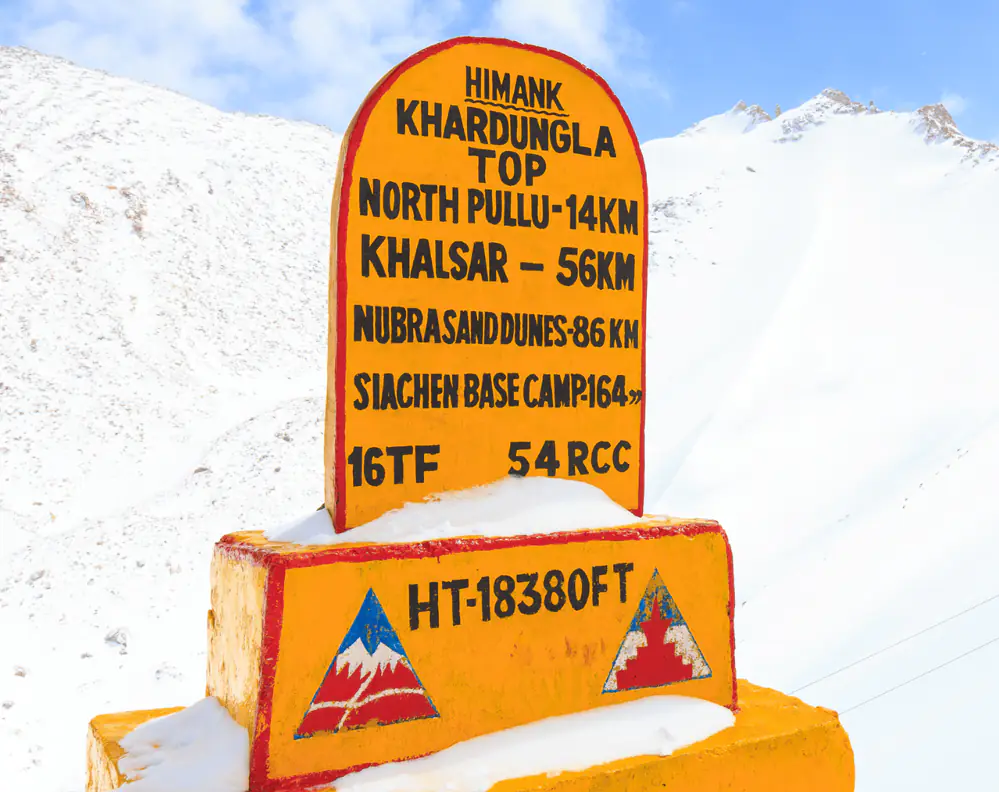

Khardungla Pass is located around 38 kilometers north of Leh and is accessible by a difficult route with a steep elevation and several hairpin turns. The Khardungla pass is located at an elevation of 18,380 feet above mean sea level. The Leh-Khardungla pass-Nubra route is recognized as one of the world’s highest highways and India’s highest road. Thousands of people visit Khardungla Pass because of its unique feature of being so high and formidable.
Many motorcycle riders from all over the globe flock to Khardungla pass to set personal records for riding beyond 18,000 feet. The Indian Army has a garrison on the summit of Khardung-la, and the view from Khardungla is spectacular, with a larger perspective of the mountain ranges.
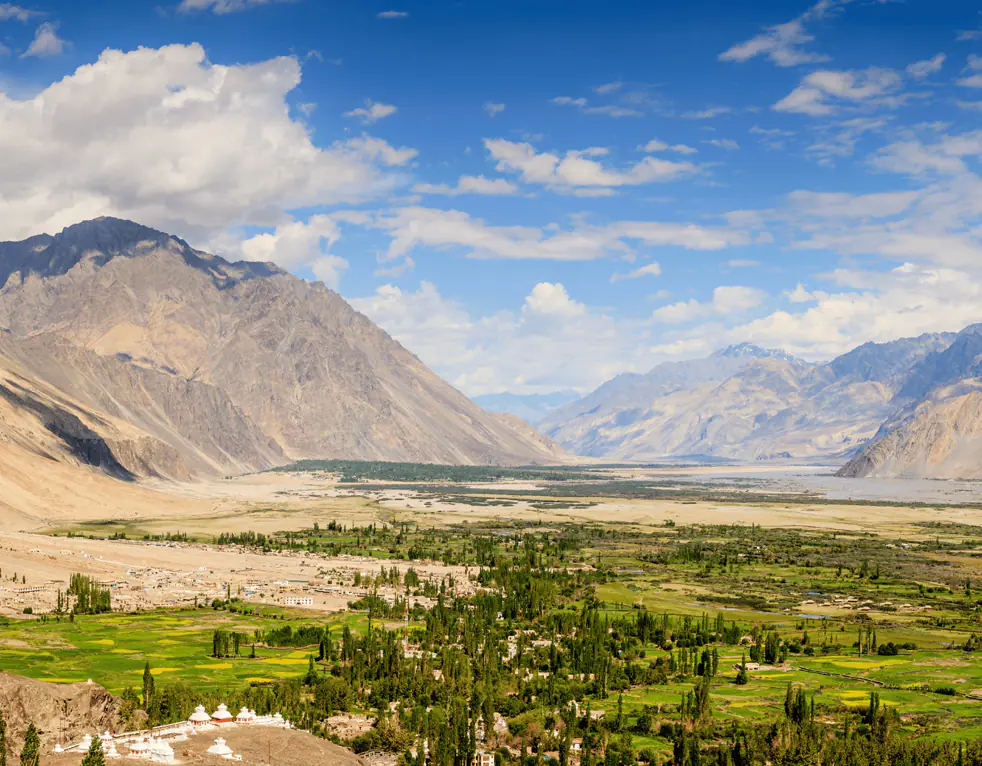
The Nubra Valley is located to the north of Leh, and the route to the valley passes via the 18,380-foot-high Khardungla Pass (Khardongla), making it one of the world’s highest motorable highways and the highest motorable road in India. Ladorma, which means “valley of flowers,” was the previous name for Nubra
The main communities in Nubra Valley are Diskit, Hunder, and Sumur. Diskit is roughly 130 kilometres from Leh. Nubra Valley is warmer than Leh. Its huge and flat valleys, Hunder sand dunes, double-humped camels, and flora in many locations, such as an oasis in the desert, make Nubra a must-see destination for travelers. In Nubra Valley, tourists choose to stay in tents (camps). However, Nubra Valley boasts a number of excellent hotels, guesthouses, and homestays. The valley is dominated by Buddhists.

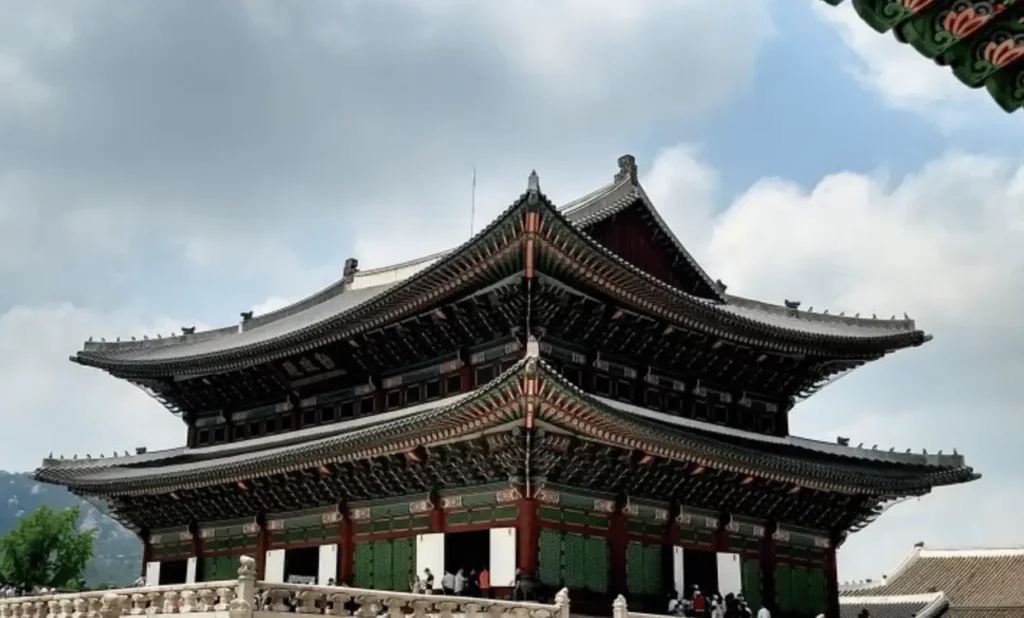

Diskit (Disket) is the administrative center of Nubra Valley in Ladakh’s Leh district, roughly 120 kilometers from Leh. Diskit is known for the Diskit Monastery, the Nubra Valley’s oldest and biggest gompa, which is located on the banks of the Shyok River. Diskit is only 7 kilometers away from Hunder. Changzem Tserab Zangpo, a follower of Tsong Khapa, the founder of the Gelugpa sect, constructed Diskit monastery in the 14th century. Diskit monastery is perched atop a high mountain face, just above Diskit hamlet.
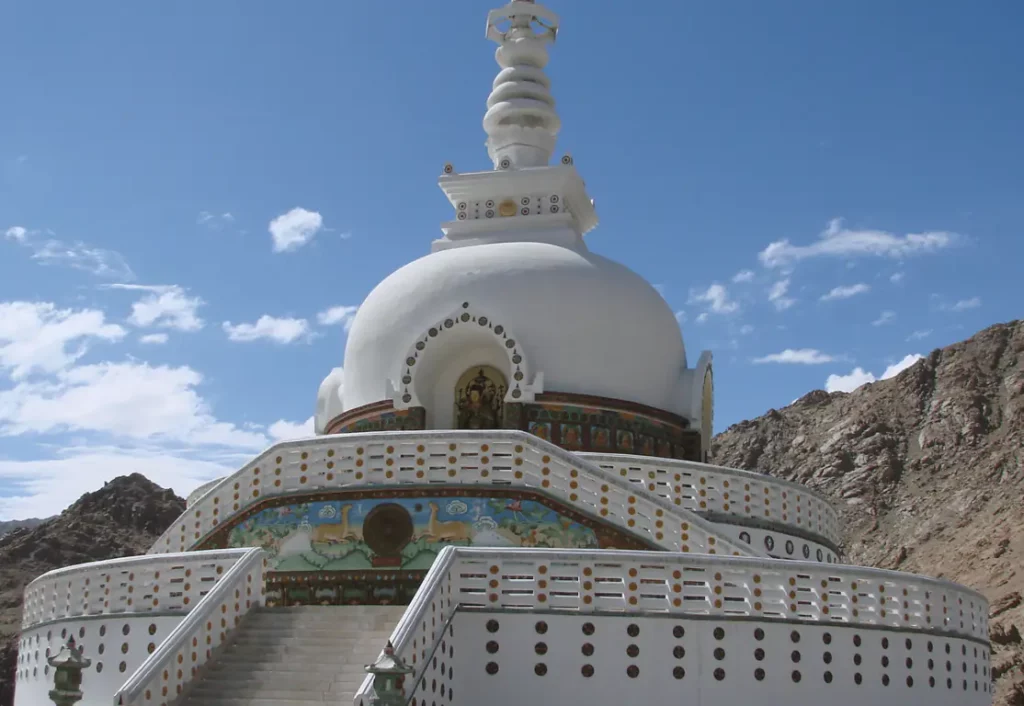
Shanti Stupa (Peace Temple), located in the higher reaches of Leh at Changspa (Chanspa), has emerged as one of Leh’s newest tourist attractions.
The stupa was erected in 1991 by both Japanese and Ladakhi Buddhists. The 14th Dalai Lama placed Buddha relics at the foot of Shanti Stupa. The stupa, which is erected on a hilltop, has sacred importance for Buddhists.
Its construction began in 1983, and a road leading to the stupa was completed two years later. Those who enjoy trekking can ascend the steep stairs to get there. Otherwise, it is also well connected by road. Because of Leh’s high altitude, one can get a panoramic view of the entire city and its surrounding mountains.



The nine-story Leh Palace, which overlooks Leh town, was erected in the 17th century by King Sengge Namgyal and is comparable in architecture to the Potala Palace in Lhasa, Tibet.
Tsewang Namgyal, the founder of Ladakh’s Namgyal dynasty, began building Leh Palace in 1553, and his nephew Sengge Namgyal finished it. The palace’s top stories housed the royal family, while the lower levels served as storerooms and stables. Leh Palace has been transformed into a museum where tourists may view royal family treasures. The top of the palace provides visitors with a panoramic view of Leh.
Leh Palace can be seen from practically anywhere in the city. Its proximity to the main market makes it appealing.
Designed By Interdigitel